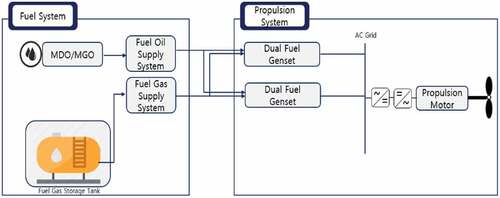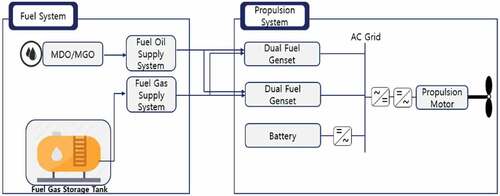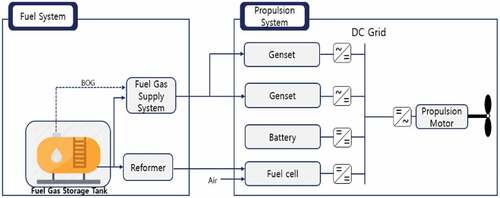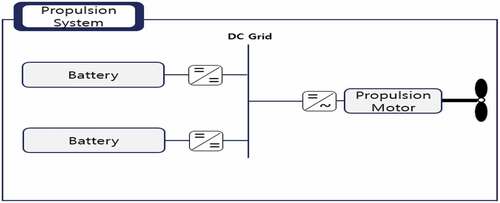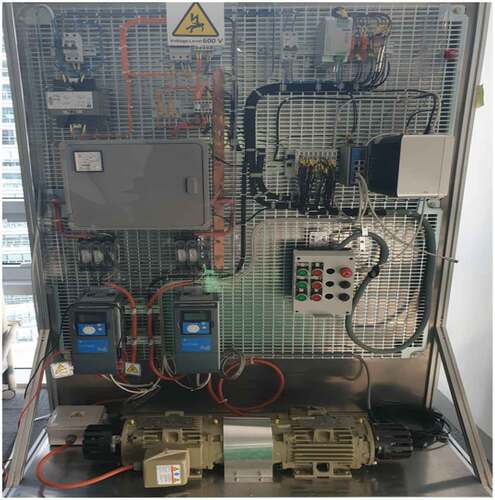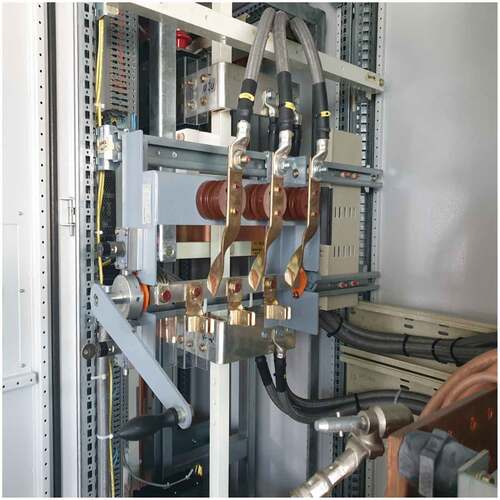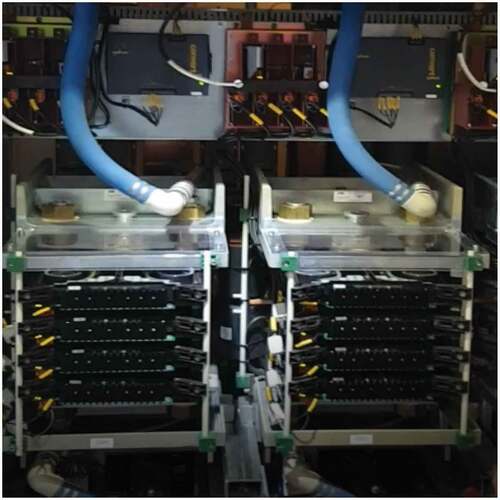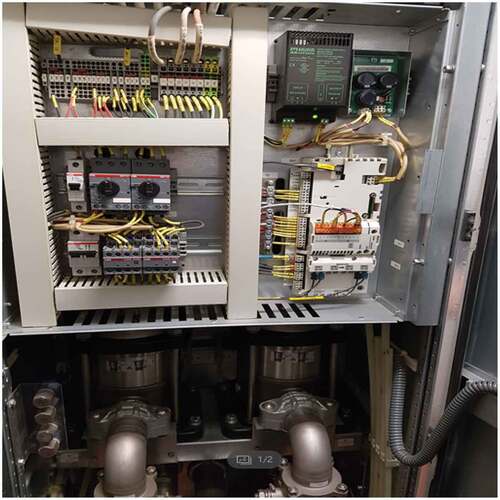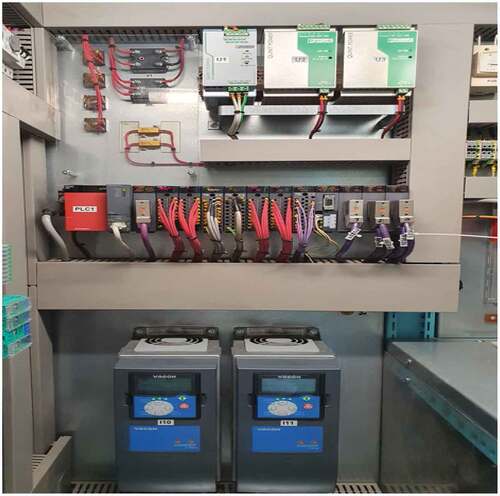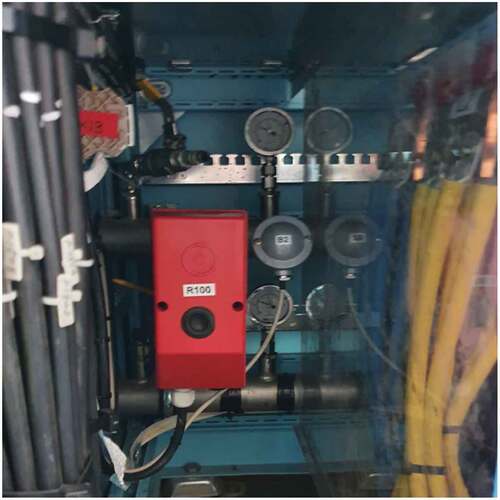ABSTRACT
In order to reduce the emission of pollutants from ships, the need to introduce eco-friendly ships is gradually increasing. Recently built ships are being applied with eco-friendly ship propulsion systems that can replace the existing propulsion systems. The number of ships to which an electric propulsion system, which is a kind of eco-friendly ship propulsion system, is applied is increasing. In addition, an electric propulsion system is attracting attention as a propulsion system suitable for autonomously operated ships to which the digital twin system is applied. Electric propulsion ships have many differences from ships to which the existing propulsion system is applied in terms of equipment and systems mounted thereon. Overseas, job training is being conducted for seamen who onboard electric powered ships for the safe operation of ships, but there is no systematic training course for electric powered ships in Korea. In this paper, we analyze in detail the current educational cases related to electric powered ships in various countries, and propose a curriculum and contents for the mandatory dutied of electric powered ships that can be applied in Korea based on the standard education curriculum of the International Maritime Organization.
Introduction
The amount of air pollutants exhausted from ships is constantly increasing, and this has emerged as a global problem. To resolve this issue, the International Maritime Organization (IMO) announced at the 70th Marine Environment Protection Committee (MEPC) meeting to limit the amount of sulfur included in fuel oils used in ship voyages to 0.5%. Based on the strategy adopted at the 72nd MEPC meeting, the IMO established short-term reduction goals for 2030 and medium to long-term reduction goals for 2050 in order to achieve the overall goal of greenhouse gas reduction. At the recently held 76th MEPC meeting, measures were prepared to elaborate the technical and operational procedures to be taken as a way to reduce the emission of greenhouse gases as decided in the previous meeting(Korea Center for International Maritime Safety Cooperation Citation2021). South Korea also enacted the “Act on Promotion of Development and Distribution of Environmentally-Friendly Ships” for the establishment and promotion of comprehensive measures and policies for development and supply of environmentally-friendly ships, which came into force on 1 January 2020(Ministry of Oceans and Fisheries Citation2021).
As the need to implement environmentally-friendly ships is increasing domestically and internationally, environmentally-friendly ship propulsion systems that can act as alternatives to conventional propulsion systems are actively being researched and applied. The construction of electric propulsion ships, as one of the environmentally-friendly ship propulsion systems, is also steadily on the rise(Market Research Report Citation2020).
Electric propulsion ships have many differences in equipment and systems loaded on the ships compared to conventional mechanical propulsion ships. Accordingly, other countries prepare and offer job training courses to marine engineers who are newly boarding electric propulsion ships to ensure the safe operation of the ships. However, despite the government-wide increase in the domestic construction of environmentally-friendly electric propulsion ships, there are no available systematic training programs regarding electric propulsion ships in South Korea.
Therefore, in this paper, we analyze in detail job training programs related to electric propulsion ships currently offered overseas, and develop and propose job-training courses on electric propulsion ships that consist of a combination of theoretical and practical training to enable marine engineers to enhance their understanding and proficiency about electric propulsion ships.
Electric propulsion system for ships
Summary of the electric propulsion system
The conventional mechanical propulsion system involves directly operating the propellers through shafts directly connected to the main engine, but the electric propulsion system ultimately uses motors to operate the propellers. These electric propulsion systems enable the application of various power sources such as generators, batteries, and fuel cells. The electricity generated from these power sources can be variously converted such as from AC to DC and from DC to AC through power conversion devices before being connected to the system. The ship is driven by controlling the speed of the propulsion motor according to the amount of load required by the ship.
Types of electric propulsion systems
Electric propulsion systems can be divided into sole propulsion of the generator, hybrid propulsion, and full electric propulsion according to the coupling conditions of various power sources such as generators, batteries, and fuel cells.
Generator only electric propulsion systems
Sole generator electric propulsion systems apply not only conventional diesel generators, but also LNG and LPG generators that use environmentally-friendly gas fuels as power sources as shown in . Recently, with the development of engines that utilize environmentally-friendly gas fuels, the range generator engines that can be chosen according to the ship type when applying the electric propulsion system is increasing (Jeon., Kim, and Yoon Citation2019a).
Hybrid electric propulsion systems
Hybrid electric propulsion systems are defined as propulsion systems that appropriately use a combination of generators, batteries, and fuel cells as power sources as shown in . When fuel cells and batteries are combined as shown in , there is the advantage of energy efficiency improvement and no discharge of exhaust gases(Jeon., Kim, and Yoon Citation2019b).
Full electric propulsion systems
Full electric propulsion systems are electric propulsion systems that only use environmentally-friendly power sources such as batteries and fuel cells to drive ships instead of conventional power sources that use fossil fuels as shown in (Jeong. et al. Citation2020). This enables the implement of a zero-emission ship propulsion system with no exhaust gas emissions from the ship(Hwang. et al. Citation2019).
Analysis of training programs related to electric propulsion ships in other countries
United States of America
Many studies are being conducted on the design and operation technologies for the power systems of electric ships in the United States. GE, one of the largest multinational conglomerates, supports the application of power conversion technology in petroleum gas, processes, power plants, and various other industrial fields. GE also provides trainings for related services, instruction automation systems, dynamic position (DP), power systems, and electric propulsion systems to the marine field.
The detailed contents of the instructions provided by GE power conversion on the electric propulsion system of electric propulsion ships are shown in (GE Traning Center Citation2018).
Table 1. Course timetable and syllabus at GE
The training program runs for 5 days, and the maximum number of trainees is limited to eight for the regular training program, but the number can be raised to twelve if the client requests a group training course. The training program includes the characteristics of electric propulsion ships, understanding the equipment, work practices, case analysis, and assessment. When we examine the details, the course can be largely divided into a theoretical section and a practical section. One instructor is responsible for the theoretical section, and instructions are performed in accordance with . Interactive discussion between the instructor and trainees is held for each chapter. In the practical section, the instructor gives a brief explanation of the practical work before the participants perform them on-site.
show an electric propulsion system simulator to help understand the total system during training, and an earthing device necessary for maintenance work of the power conversion systems. Beginners with very little experience in electric propulsion systems can take practical training courses that involve using training systems and equipment used in actual propulsion ships to enhance their work proficiency and capability to prevent safety-related accidents on the ship.
Singapore
Among the educational institutions established and currently operating in Singapore, the ABB Marine Academy is a representative educational institute that specializes in electrical equipment on ships. As a world-renowned engineering firm, ABB Marine Academy mainly provides education on electric propulsion systems, power management, electrical safety, and motor control.
The contents of the training course provided by the ABB Marine Academy on electric propulsion ships are shown in (ACS 6000 AD/SD Marine Drive). The course runs for 4 days, and the maximum number of participants is ten(ABB Marine Academy Citation2019).
Table 2. Course timetable and syllabus at ABB
When we look at the details of , we can see that the equipment and theoretical section of the course is not much different from the course provided by GE, but the practical section is conducted by professional instructors, and trainees have to take an exam every day. More than half of the total duration of the course is allocated to the practical portion, which consists of practical training, analysis of faults, and assessment.
Like the GE Academy, the ABB Marine Academy also utilizes equipment used in actual electric propulsion ships in their courses. In particular, since ABB is a global manufacturing company of electric propulsion equipment, they have the advantage of ship engineers having high proficiency in equipment handling.
shows an integrated gate commutated thyristor (IGCT), a device in the power conversion panel that is frequently replaced and maintained, and shows the cooling unit, which cools the entire system. By replacing and maintaining the exact equipment installed in currently operating ships maximizes the effectiveness of the training course.
Norway
Norway is conducting various research on electric propulsion ships and real ships are being used for operation practice. In particular, research on the world’s first autonomous electric propulsion container ship, “Yara Birkeland” was launched in 2017 with Kongsberg, and they are aiming to achieve full unmanned operation in 2022. Kongsberg, a leading research institute specializing in manufacturing electric propulsion equipment in Northern Europe, is providing various training courses on power conversion devices of the electric propulsion system, propulsion devices, and DP systems.
The training program on power electric systems provided by Kongsberg runs for 3 days (21 hours), and the maximum number of trainees is limited to eight. A difference with the training courses of other institutes is that the training course in Kongsberg consists of a combination of theoretical instructions, simulation practices, and on-site practical training. The main contents of the training program include theoretical instructions on power systems including electrical safety, active front end (AFE) converters, blackout prevention systems, generators and motors for propulsion, and power management systems, and using actual equipment such as simulators in practical training of parallel operation of generators, safety precautions, power management systems, blackout prevention systems, hybrid shaft generators, and AFE converter drivers. Each time the training program is conducted, the main key points are explained, test equipment, and specified tools are utilized(Konsberg Maritime Customer Training Course Citation2021).
shows the inside of an AFE rectifier, and shows a device used to check for leakage of cooling water that cools power devices such as IGBT. The equipment used on-site is exchanged and inspected to enhance the practical skills of trainees.
Development of a job-training course model on electric propulsion ships
With the increase in the number of electric propulsion ships, the IMO is offering training courses on electric propulsion ships. The IMO model course 7.08(International Maritime Organization Citation2014) for electrical engineers requires training on the system of the electric propulsion ships, and preceding research(Ryu and Lee Citation2017) also proposed training courses on electric propulsion systems to be incorporated into the training required for ship engineers. From the overseas example in Chapter 3 of this paper, it can be inferred that practical training is very important in the training on electric propulsion ships. This implies that the main practical processes for the maintenance and management of the system need to be thoroughly understood as well as understanding the system of electric propulsion ships itself. Furthermore, practical training is also crucial for the management and safety of electric propulsion ship systems that are different from conventional ships propelled by internal combustion engines. Hence, it is necessary to include practical training in courses on the power conversion systems of electric propulsion ships in Korea.
Therefore, we referred to the IMO model course as an international education standard and overseas cases to propose a job-training model consisting of theoretical instructions on electric propulsion systems and the necessary practical training in this paper. Accordingly, we propose that the training course runs for 4 days over 30 hours, including 11 hours of theoretical instructions, 16 hours of practical training, and 3 hours of practical assessment.
Theoretical instructions
Engineers boarding electric propulsion ships sometimes face difficulty in performing their duties due to the ship having a different configuration to conventional propulsion ships. For engineers to smoothly progress with their work, they first have to understand the overall structure of the electric propulsion system. Thus, theoretical instructions on the basic structure and characteristics of the system should be provided. Therefore, we propose the following instruction subjects and the number of hours allocated for each of the topics: Overview of Electric Propulsion Ships (1 hour), Characteristics of Propulsion Motors (1 hour), Converter Systems (2 hours), Inverter Systems (2 hours), Cooling Systems (1 hour), Capacitor Bank (1 hour), Work Safety Procedures (2 hours), Safety Devices (1 hour).
The instruction on converter systems of the electric propulsion ships should also include explanations and comparisons between various methods used to reduce harmonic waves in electric propulsion ships, as well as the practical equipment installed in the training institute. In addition, the instruction on work safety procedures, which is fundamental to maintenance work, should train the trainees to write the work procedures and the safety document, “permit to work,” which must be prepared during work operations, by using actual drawings. The instruction on safety devices should include information about safety equipment installed on power conversion devices, and LOTO and earthing required for work.
In accordance with the above plans, we propose the allocation of 11 hours for theoretical instructions that can enhance the effectiveness of practical training in this paper.
Practical training
The practical training should consist of contents that can assist the understanding of the electric propulsion system, and practice the measures necessary for the maintenance and management of the ship.
In order to deepen the understanding of the electric propulsion system, we propose a simulator training that ensures similarity and safety. Simulators can teach various subjects, directly operate and control the electric propulsion system with functions and structures similar to conventional engine simulators and high voltage simulators, and enables the operation of safety devices and safety training systems. The devices required for this process include converter panels, terminal panels, inverter panels, capacitor panels, water cooling panels, earthing panels, and propulsion motors. In addition, IGBT-releasing tools, voltage detectors, high voltage Megger testers, cooling water replacement tools, cooling tube replacement tools, and spiders (portable earthing tools) are also required. We would like to propose the following practical training subjects that involve utilizing the aforementioned equipment and the number of hours allocated to each subject: Disassembly and Assembly Practice of IGBT used in converters and inverters (4 hours), Practice with Cooling Devices (4 hours), Earthing Practice with Electrical Equipment (2 hours), Practicing Controller Replacement (2 hours), Practicing Detector Replacement (2 hours), and System Operation (2 hours).
In particular, the disassembly and assembly practice of IGBT should include how to verify whether the power has been turned off before initiating the disassembly of the IGBT stack, and how to verify if the IGBT has been assembled accurately. The practice with cooling devices should teach methods on replenishing cooling water, checking for leakages, and replacing cooling tubes. This sort of practical training should utilize equipment installed on the training grounds to allow trainees to practice in pairs like during actual work. It is effective to implement the main work procedures that can include the above training subjects with various scenarios. Based on these scenarios, we propose that the practical training should run for 16 hours, and the practical assessment for 3 hours to confirm whether the training contents have been well-revised. The practical assessment will be an ideal opportunity for trainees to recall and summarize the theoretical and practical contents of the course. The assessor should use a checklist to assess whether trainees can safely and accurately prepare and conduct tasks, and perform restoration work according to the appropriate work procedures for all the practical work included in the training course. The effectiveness of the training can be enhanced by asking oral questions during the practical assessment.
Conclusion
With the recent strengthening of IMO regulations to reduce greenhouse gas emissions, the demand for environmentally-friendly ships has increased, and electric propulsion ships using various environmentally-friendly fuels that satisfy the various regulations are being constructed and utilized as state-of-the-art ships. In Korea, the construction an pilot operation of electric propulsion ships that operate the motor by using electricity generated from fuel cells such as LNG or LPG generators, batteries, and hydrogen are being planned as a response to environmental regulations.
Electric propulsion ships that use various environmentally-friendly fuels have very different propulsion structures from conventional ships, and as a response to this, advanced shipping countries provide various training programs for marine engineers. In this paper, we analyzed the contents of various training programs based on the IMO model course operated in overseas training institutes to propose training contents and the appropriate duration of training related to electric propulsion systems of electric propulsion ships. We proposed that the training course be divided into theoretical instructions and practical training, which should be centered around actual work processes, and a practical assessment should be conducted that covers the entire practical training course. Through this training course, we expect that engineers boarding electric propulsion ships will be able to enhance their work proficiency on power conversion devices and systems, and prevent safety-related accidents in their operations.
Disclosure statement
No potential conflict of interest was reported by the author(s).
References
- ABB Marine Academy. 2019. Description of Electirc Propulsion System Course. Singapore.
- GE Traning Center. 2018. Electric Propulsion System Courese. Huston, USA.
- Hwang., J. Y., C. H. Jeon., H. M. Jeon., and J. S. Kim. 2019. “A Study on the Application of Domestic Ferry to A Battery Propulsion Ship Connected with Phothvoltaic System.” Journal of the Korean Society of Marine Environment & Safety 25 (7): 945–952. doi:10.7837/kosomes.2019.25.7.945.
- International Maritime Organization. 2014. IMO Model Course 7.08 Electro-technical Officer. London, UK.
- Jeon., H. M., J. S. Kim, and K. K. Yoon. 2019a. “Large-scale Electric Propulsion Systems in Ships Using an Active Front-end Rectifier.” Journal of Marine Science and Engineering 7 (6): 168. doi:10.3390/jmse7060168.
- Jeon., H. M., J. S. Kim, and K. K. Yoon. 2019b. “Fuel Cell Application for Investigation the Quality of Electricity from Ship Hybrid Power Sources.” Journal of Marine Science and Engineering 7 (8): 241. doi:10.3390/jmse7080241.
- Jeong., B. U., H. M. Jeon., S. W. Kim., J. S. Kim., and Z. Peilin. 2020. “Evaluation of the Lifecycle Environmental Benefits of Full Battery Powered Ships: ComparativeAnalysis of Marine Diesel and Electricity.” Journal of Marine Science and Engineering 8 (8): 580. doi:10.3390/jmse8080580.
- Konsberg Maritime Customer Training Course. 2021. Power Electric System. Norway: Konsberg.
- Korea Center for International Maritime Safety Cooperation. 2021. Results of Committe. Korea: Sejong.
- Market Research Report. 2020. Electric Ships Market by Power Source, Autonomy. Dublin, Ireland: Ship Type and Region-Global Forecast to 2030.
- Ministry of Oceans and Fisheries. 2021. Korean-style Eco-friendly Shpis Prepare to Lead the Global Carbon-neutral Ship Market. Korea: Sejong.
- Ryu, K. T., and Y. H. Lee. 2017. “Development of a Traing Model for Electro-technical Officers on Ships.” The Korean Society Fishries and Sciences Education 29 (3): 767–777.

